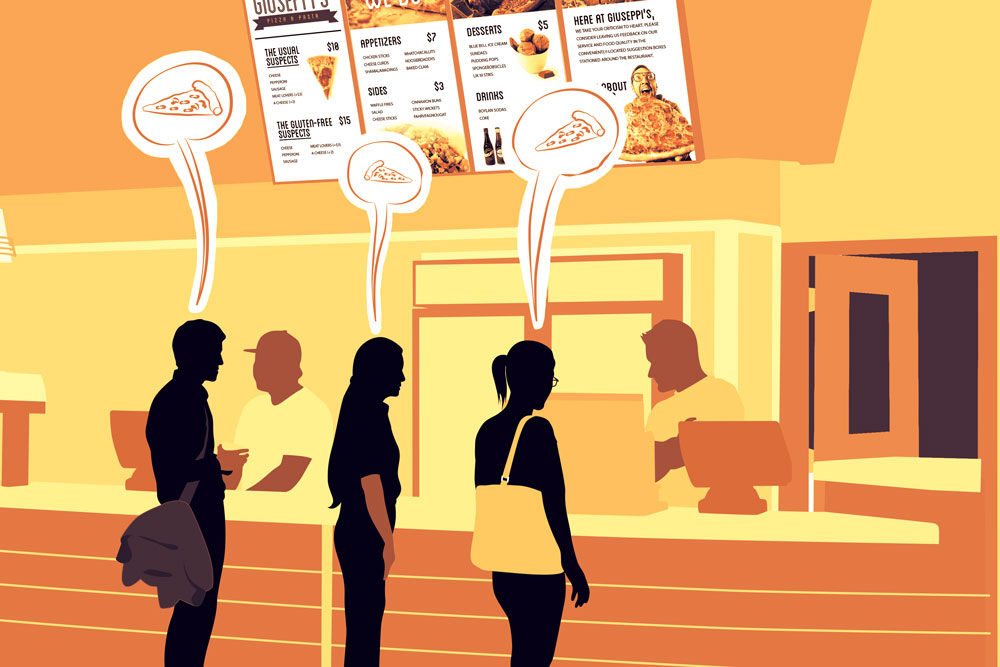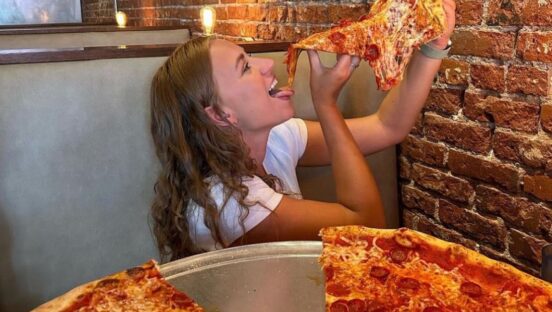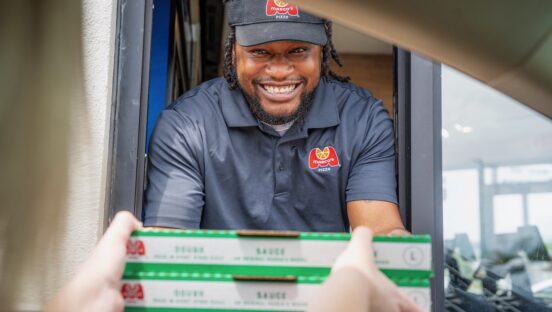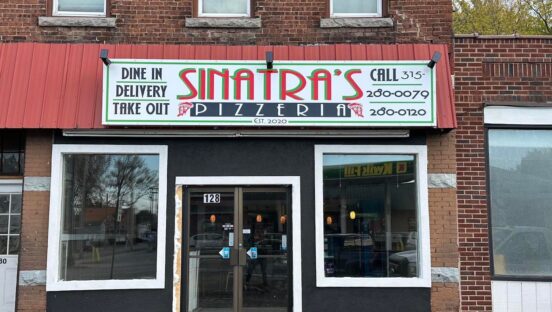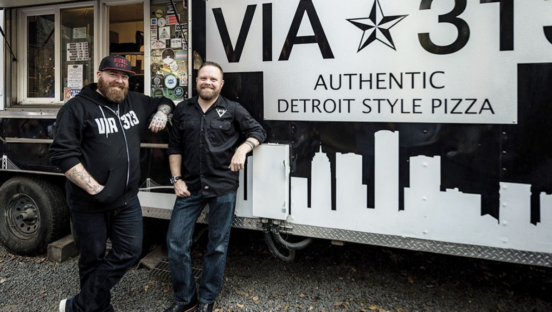So, you bit the bullet and invested in a digital menu board. Now customers can see your menu in larger-than-life living color. So why aren’t you selling more pizza and appetizers, like the salesman promised?
Digital menu boards are growing in popularity for a reason. They have the ability to entertain your customers, reduce perceived wait times, and help upsell appetizers, gift cards, catering and more. But it’s not just a matter of posting menu items and waiting for a cash influx. Read on to discover insider tips on how to effortlessly improve your digital menu board in order to better promote and sell your pizzeria’s offerings.
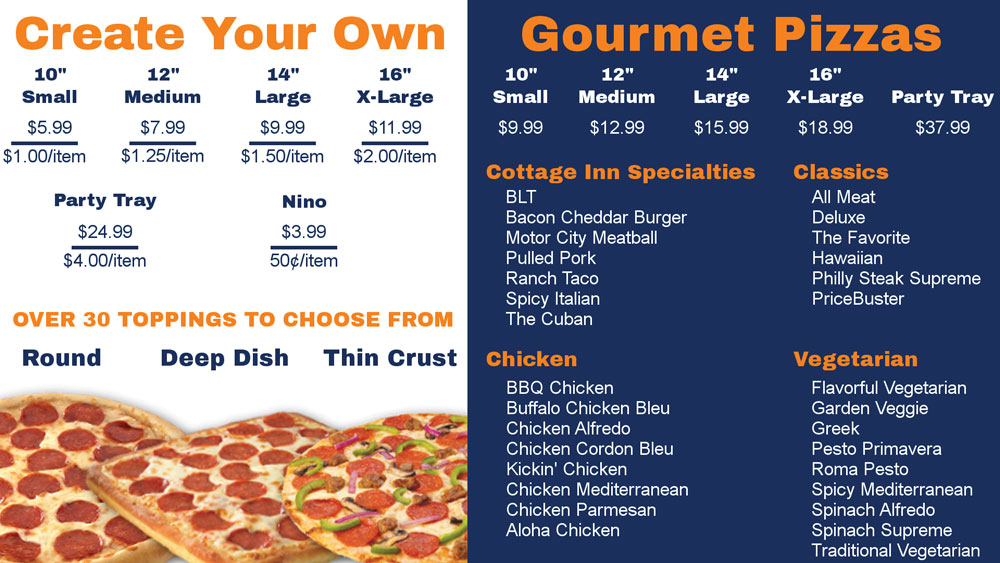 |
|
There's no need to clutter up your menu with crazy fonts and elaborate imagery. Keep it clean and simple to draw your customers' eyes where you want them to go. |
1) Make It Easy to Read.
One of the most important aspects of any successful digital menu board is its readability. Many guests feel pressured when staring up at a big board faced with dozens of choices. Make it easy for them to immediately find what they want, and add something they didn’t even know you had.
“When your designers are making the menu, it’s really easy to make it look pretty for the computer screen, but that’s three times smaller than what it’s going to look like when it’s in your store,” says Allison Loehr, head of marketing for Ann Arbor, Michigan-based Cottage Inn Pizza. “Make the menu too small, and you can’t read it; make it too big, and there’s too much white space. Make sure you have the ability to test the menu in the environment where it will be used, and don’t try to fit too much on it.”
Colin Bovet, head of marketing and partnerships at Enplug in Los Angeles, agrees, adding that readability should always trump creativity. “Clearly showing the different menu options—so they’ll be readable at a
distance—is the most important thing you can do,” says Bovet. “Don’t think using crazy fonts will make your menus more interesting.”
Loehr says customers’ eyes will naturally be drawn to certain sections; you have to decide if that’s where you want your guests’ eyes to go. “As long as they can find the pizza name, size and pricing, that’s the basic information that needs to be accessed,” she says. “When you start clouding that with too much other noise and product shots, that’s when it becomes an ineffective, pretty billboard that people can’t actually order from.”
Loehr suggests figuring out what your menu anchor points are and following standards that say customers read menus from left to right. “Our breadsticks and cheese breads are at the front and top of the menu, while our pizzas are in the center,” she says. “Our regular pizzas have a white background so the images pop, and our gourmet pizzas have a blue background to draw the eye immediately toward them.”
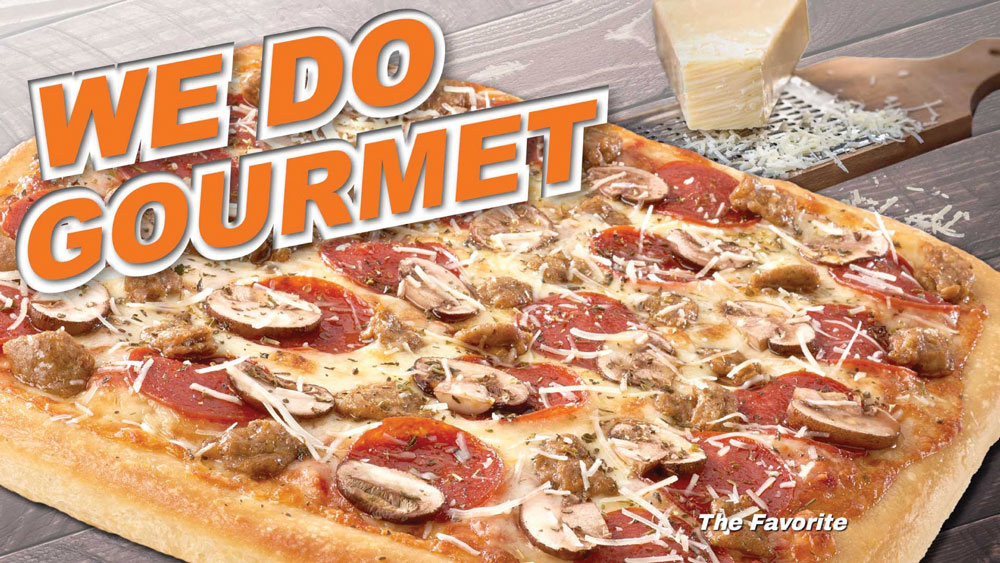 |
|
“We like to utilize certain sections for upselling….The upselling portion shouldn’t conflict with the need for essential information about the pizzas and pricing.”
—Allison Loehr, Cottage Inn Pizza
|
2) Match Your Brand.
As with all of your other marketing materials, your digital menu board should match your brand. “Tie your menus into your brand as much as possible,” says Bovet. “Look at the color scheme and design of your restaurant, website, and existing marketing materials for inspiration.”
Add your own personal touch by featuring a video that welcomes guests to the store or highlights your pizzeria’s recent community involvement. “At our Waterford store, the owner included a video that talks about him opening his store, so when guests walk in, they see a video of him talking on the menu board, and then they see him in the store,” says Loehr. “It gives it a really nice, personal feel.”
3) Make It Move.
Everyone notices when something is in motion. “The perceived wait time for customers should be less when looking at your digital menu board,” says David Dotan, digital sales for Digital Menus USA in Miami. “They should not be getting bored; they should be entertained by your menu board.”
Consider a spinning pizza next to your daily special or a spinning star that calls out the chef’s favorite items. “Since you don’t have a lot of space to describe the menu items, show a photo of the item and, at the same time, have the item highlighted or underlined on the menu while the picture is showing,” Dotan suggests. “They’ll be able to associate the item name and the photo.”
Dotan recalls a menu board that utilized a small butterfly that moved around an otherwise static menu to encourage orders of specific items. Called the Java City butterfly, it would move to higher-margin items if the line was short and quicker-to-prepare items if the line was long.
While motion via video and photos is good, menu flipping is not. “We strongly recommend keeping most of the menu static, because it’s frustrating for customers when they’re trying to read a menu, only to have the entire menu disappear and change,” says Bovet. “Flip through different images on the menu, or better yet, have an entirely separate screen dedicated to rotating product photos, promotions and even engaging elements like live social media walls.”
Dotan agrees, adding, “People get upset when you flip over the whole screen. If you have a very large menu that won’t fit, it’s better to scroll up your text line by line.”
4) Make Them Salivate.
Social media is proof positive that consumers love to scroll through photos and videos of food. A menu board can take advantage of—and
integrate—many of those same elements. “Photos and videos play a crucial role in a menu board,” says Bovet. “We recommend showing two to three professional photos of your pizzas that highlight your popular and high-margin items.”
Dotan suggests taking it a step further and focusing specifically on your ingredients if you want to get those guests' stomachs growling. “When you integrate photos and videos, focus on the ingredients,” he advises. “For example, show melting cheese on top of a pizza or the toppings falling down on top of the pizza. Seeing someone put a pizza into the oven does nothing. It’s all about the close-up—coming in as close as you can to the ingredients of the pizza.”
While you’re at it, Dotan says you can integrate some of those amazing Instagram food photos right into your menu board. “Picture-based social media feeds like Instagram should be featured on your digital menu board,” he says. “If you had a hashtag for #pizzaoftheweek, you could have interaction with your customers showing right on the menu.”
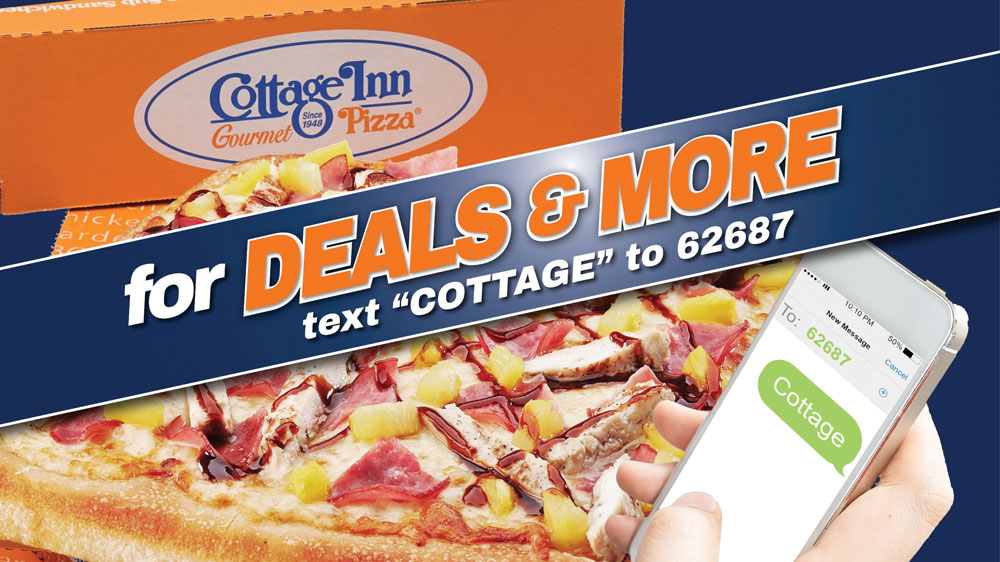
5) Separate and Promote Specific Items.
With so much to fit on your digital menu board, you may wonder if there’s space left over to include special promotions and upsell items. Experts say it’s best to separate them from the main menu.
It’s important to design the menu so that your promotions don’t distract from the actual menu, according to Loehr. “We like to utilize certain sections for upselling,” she says “There are two screens that show the menu and one that’s used for promotions such as Pepsi, appetizer and dessert upsells. The upselling portion shouldn’t conflict with the need for essential information about the pizzas and pricing.”
Loehr adds that everyone usually knows what pizza they want, but they may not know that they can add on a dipping cup or an order of gourmet cheese bread. “We have special promotional squares on our digital menu board that let guests know about add-ons,” she says. “We also have stores that promote their lunch specials during lunchtime and then switch back once lunch is over.”
When Cottage Inn introduces a new item, an entire screen is dedicated to it, according to Loehr. “Rather than change our whole menu, we throw a little more force behind it by having an entire screen say, ‘Try this today’ or ‘Ask us about our new product,’” she says.
And with the guidelines concerning menu nutritional information still up in the air, Bovet suggests offering a section for your health-conscious guests. “If you don’t want to show calories on all items, one good hybrid option is to use an icon like a heart next to healthy items to help guide customers,” he says.



